The Samsung Galaxy S10+ Snapdragon & Exynos Review: Almost Perfect, Yet So Flawed
by Andrei Frumusanu on March 29, 2019 9:00 AM ESTCamera - Low Light Evaluation
Low-light capture improvements is something that Samsung has been very mum about for the Galaxy S10. Fundamentally on the hardware side of things nothing has really improved compared to the Galaxy S9/Note9. So in practise, any difference we would be seeing should be solely based on the processing improvements of the Galaxy S10.
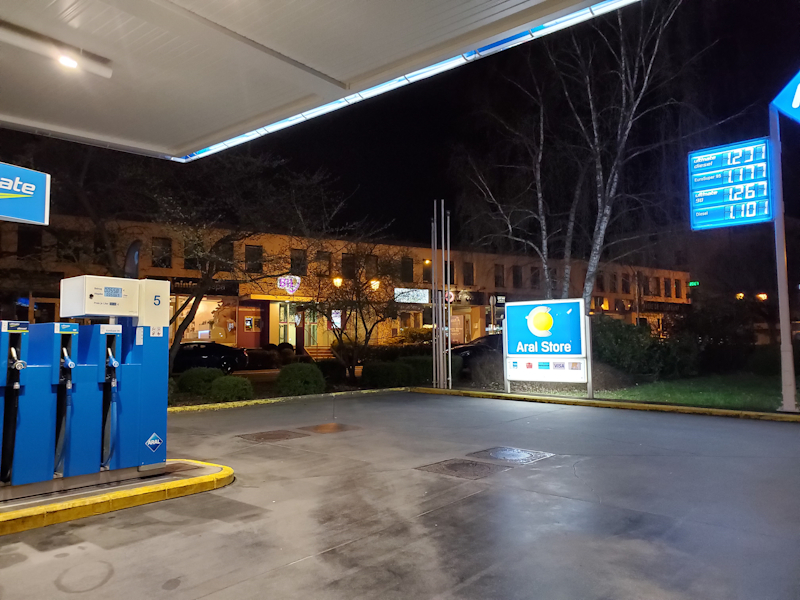
[ Galaxy S10+ Snapdragon ] - [ Galaxy S10+ Exynos ]
[ Galaxy Note9 (E) ] - [ Galaxy S9+ (S) ] - [ Galaxy S8 ]
[ iPhone XS ] - [ iPhone X ] [ LG V40 ] - [ OnePlus 6T ]
[ Pixel 3 ] - [ View20 ] - [ Mate 20Pro ]
In the first shot, we’re seeing again very different results between the Snapdragon and Exynos, but in a twist compared to the daylight shots, this time around it’s an advantage on the side of the Exynos model. Here the latter models is able to bring out a lot more shadows in the scene and is significantly sharper than the Snapdragon variant. The Snapdragon does a bit better on the bright highlights of the signage, however I don’t think this was worth it as it gives up too much in other parts of the shot.
I feel as if the Snapdragon has quite a bit of sharpening going on, which makes very little sense to use in a scenario like this.
The Galaxy S10’s are both beat by the Mate 20 Pro’s large sensor which just has much better native dynamic range, retaining more texture details on the gas station floor and roof.
Using the wide-angle lens in such a scenario doesn’t result in very good picture. The Snapdragon achieves better dynamic range and able to show the signage correctly without overblowing it, however the Exynos beats it in terms of detail. Noise on the latter is a lore more coarse and pronounced which can result in some ugly regions on even surfaces.

[ Galaxy S10+ Snapdragon ] - [ Galaxy S10+ Exynos ]
[ Galaxy Note9 (E) ] - [ Galaxy S9+ (S) ] - [ Galaxy S8 ]
[ iPhone XS ] - [ iPhone X ] - [ LG V40 ] - [ OnePlus 6T ]
[ Pixel 3 ] - [ View20 ] - [ Mate 20Pro ]
Big advantages in sharpness on the bright parts of the picture for the Snapdragon with stronger contrast for this phone. The Exynos doesn’t do well on the bright parts, blurring them, but on the other hand it has better details in the shadows than the Snapdrgon, with overall less pronounced light noise.
In terms of light capture, the Mate 20 Pro is far ahead and Night Sight on the Pixel 3 also sweeps the floor with the competition.
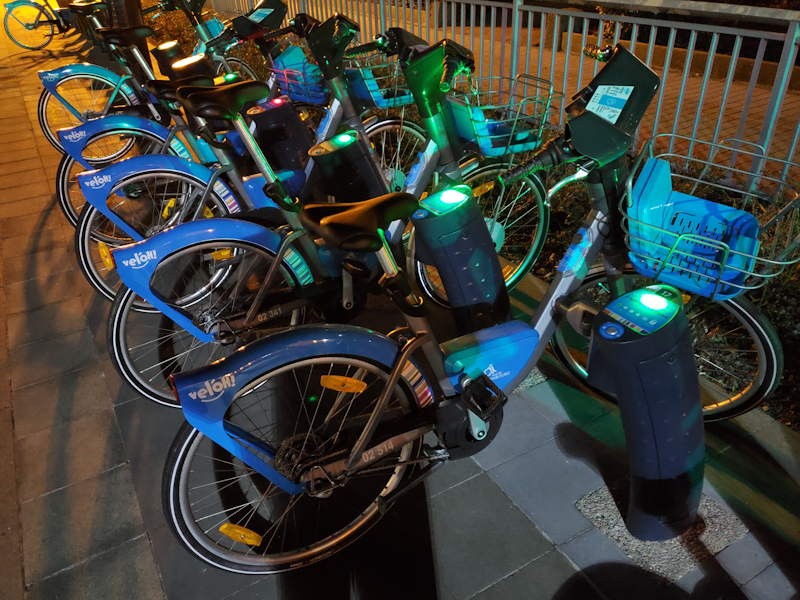
[ Galaxy S10+ Snapdragon ] - [ Galaxy S10+ Exynos ]
[ Galaxy Note9 (E) ] - [ Galaxy S9+ (S) ] - [ Galaxy S8 ]
[ iPhone XS ] - [ iPhone X ] - [ LG V40 ] - [ OnePlus 6T ]
[ Pixel 3 ] - [ View20 ] - [ Mate 20Pro ]
The Snapdragon here is heavier processed with darker shadows and noise reduction, however this makes little sense in a low-light show and the Exynos is more natural with better shadow detail even if it has more natural sensor noise.
Although Samsung at least beats the newest iPhones, it’s no match for Huawei and the Pixel’s Night sight.
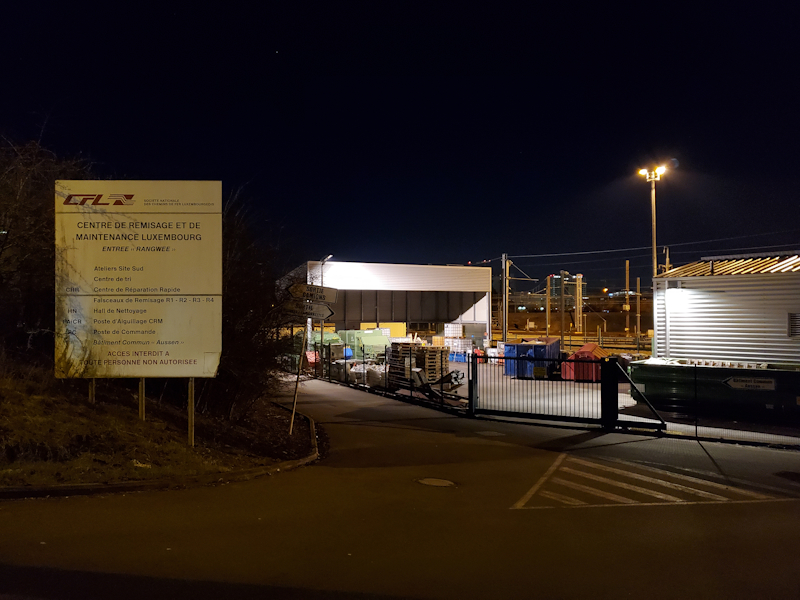
[ Galaxy S10+ Snapdragon ] - [ Galaxy S10+ Exynos ]
[ Galaxy Note9 (E) ] - [ Galaxy S9+ (S) ] - [ Galaxy S8 ]
[ iPhone XS ] - [ iPhone X ] - [ LG V40 ] - [ OnePlus 6T ]
[ Pixel 3 ] - [ View20 ] - [ Mate 20Pro ]
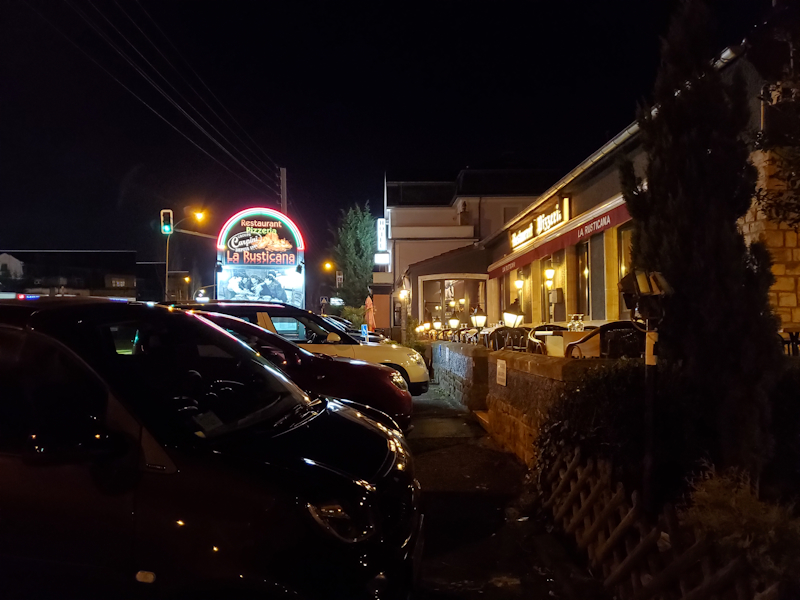
[ Galaxy S10+ Snapdragon ] - [ Galaxy S10+ Exynos ]
[ Galaxy Note9 (E) ] - [ Galaxy S9+ (S) ] - [ Galaxy S8 ]
[ iPhone XS ] - [ iPhone X ] - [ LG V40 ] - [ OnePlus 6T ]
[ Pixel 3 ] - [ View20 ] - [ Mate 20Pro ]
In the last generic low light shot we see the Snapdragon again favour evening out highlights and sacrificing shadows. The Exynos does the opposite with more blown out highlights but with better shadow detail retention in the foreground.
On the wide angle, the Exynos produces a much more useable shot even though the noise is quite terrible.
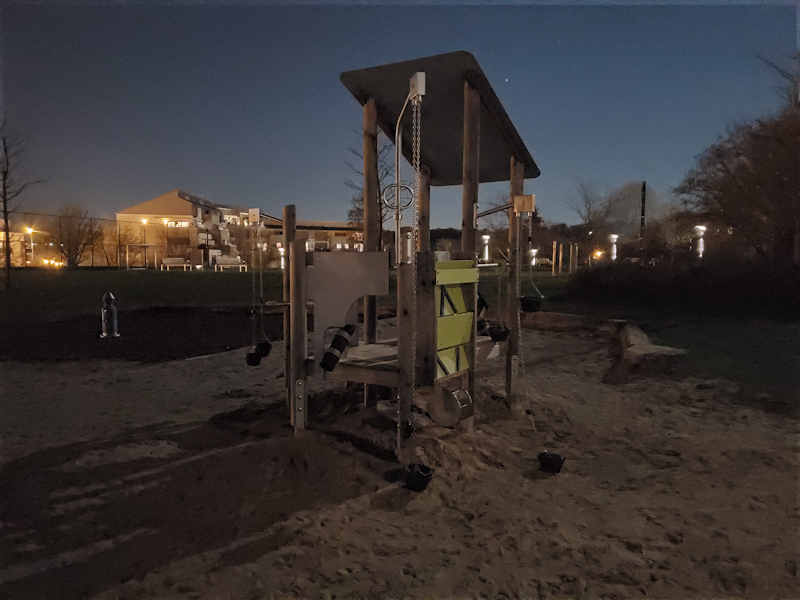
[ Galaxy S10+ Snapdragon ] - [ Galaxy S10+ Exynos ]
[ Galaxy Note9 (E) ] - [ Galaxy S9+ (S) ] - [ Galaxy S8 ]
[ iPhone XS ] - [ iPhone X ] - [ LG V40 ]
[ OnePlus 6T ] - [ Pixel 3 ]
[ View20 ] - [ Mate 20Pro ]
Going into extreme low light scenarios, we’re venturing into shots that usually in the past we didn’t expect phones to be able to capture.
This is the first scene in which Samsung’s new Bright Night mode triggers. The new extreme ultra low light mode functions similarly to Huawei’s Night mode or Google’s Night sight, although the results here aren’t quite the same. The result here heavily favour the Snapdragon chip as it’s able to produce much less noise. It’s not competing with Huawei or Google, however it is able to showcase a result that is much better than some other traditional shooters.
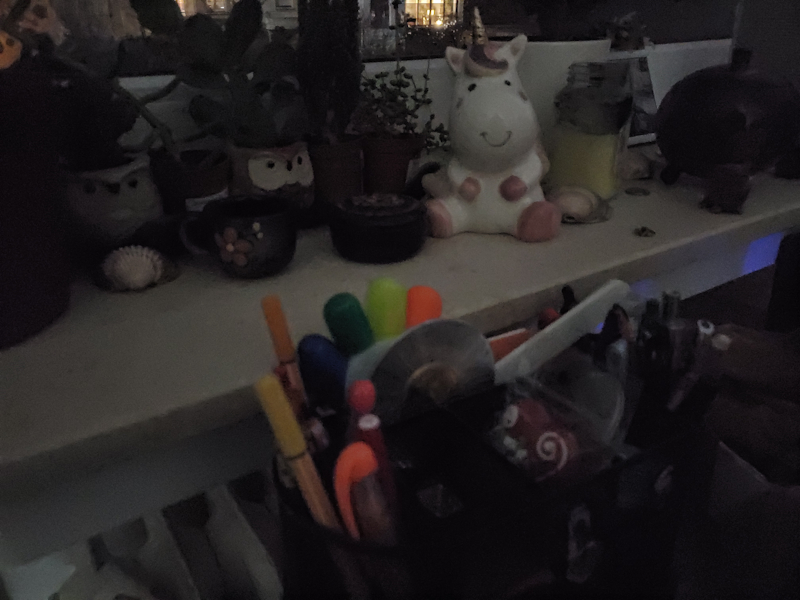
[ Galaxy S10+ Snapdragon ] - [ Galaxy S10+ Exynos ]
[ Galaxy Note9 (E) ] - [ Galaxy S9+ (S) ] - [ Galaxy S8 ]
[ iPhone XS ] - [ iPhone X ] - [ LG V40 ] - [ OnePlus 6T ]
[ Pixel 3 ] - [ View20 ] - [ Mate 20Pro ]
A second example of the new Bright Night mode, we again see that it does help the S10 over its auto mode and it lands the phone in third place after Huawei’s flagship and Google’s Night Sight.
Low-light Conclusion
Overall, the low-light capture ability of the Galaxy S10 isn’t very exciting. Fundamentally Samsung needed to innovate more in this regard and I would have wanted to see some more innovation to the likes of Huawei and Google.
Low-light is again a scenario where the Snapdragon and Exynos variants of the S10 differ quite a bit. The latter tends to produce more natural noise in most shots and retains more shadow detail, while the Snapdragon does better in brighter parts. Overall, I’d say it’s a toss-up between the two and it’ll depend on the given scene.










229 Comments
View All Comments
xian333c - Wednesday, April 17, 2019 - link
How to buy that unicorn on table in ur shout?Brightontech - Sunday, April 21, 2019 - link
it is an awesome phone<a href="https://www.brightontech.net/2019/04/audiovideo-ed... Editor and Video Converter</a>
Video Editor and Video Converter
Jhereck - Tuesday, April 23, 2019 - link
Hi Andrei another question regarding the patch designed to increase PELT resonsiveness : is there any way a third party kernel can include it, therefore making s9 and s10 the devices they should be ?You know like last year when you tried to play with s9 exynos kernel in order to match snapdragon power and power efficency ?
Thanks in advance
Rixos - Thursday, May 2, 2019 - link
It's kind of sad, I was actualy looking at the s10e as a replacement device for my galaxy S7 but as I live in Europe I would be getting the Exynos variant. Worse audio quality, less processing power and worse camera results. Basically seeing this kind of ruined the purchase for me. In some sense I wish I would not have seen it, the S10e is likely still a great upgrade for my S7 but knowing that there is a better version out there just ruins it for me. I guess ignorance sometimes really is bliss.theblitz707 - Thursday, May 23, 2019 - link
I see this is in every review. I actually went to stores and used my phones ambient light sensor and an another phones flashlight to measure display brightnesses. Although slightly inaccurate lg g7 gave a 1050lux reading with boost on.(all test on apl100) Taking that as a base s9 plus did 1020 s10 plus did 1123 and p20 pro did around 900 when i shone my flashlight to each sensor. So why everyone makes it seem like they are less bright than they actually are? Does using a flashlight to trigger high brightness impossible to imagine? Let me tell you those oled screens get very bright with high ambient light like outside on a sunny day.ballsystemlord - Monday, June 3, 2019 - link
Spelling and grammar corrections. I did not read the whole thing, so there maybe more.Samsung new L3 cache consists of two different structures
Possesive:
Samsung's new L3 cache consists of two different structures
Similarly, the A75's should be a ton more efficient the A55 cores at the upper performance points of the A55's.
Missing "than":
Similarly, the A75's should be a ton more efficient than the A55 cores at the upper performance points of the A55's.
Arm states that the new Cortex A76 has new state-of-the-art prefetchers and looking at what the CPU is able to do one my patterns I'd very much agree with this claim.
Missing "to":
Arm states that the new Cortex A76 has new state-of-the-art prefetchers and looking at what the CPU is able to do to one my patterns I'd very much agree with this claim.
The nature of region-based prefetchers means that fundamentally any patterns which has some sort of higher-level repeatability will get caught and predicted, which unfortunately means designing a structured test other than a full random pattern is a bit complicated to achieve.
"have" not "has" and a missing y:
The nature of region-based prefetchers means that fundamentally any patterns which have some sort of higher-level repeatability will get caught and predicted, which unfortunately means designing a structured test other than a fully random pattern is a bit complicated to achieve.
Switching over from linear graphs to logarithmic graphs this makes transitions in the cache hierarchies easier to analyse.
Excess "this" and analyze is with a "z":
Switching over from linear graphs to logarithmic graphs makes transitions in the cache hierarchies easier to analyze.
Indeed one of the bigger microarchitectural changes of the core was the addition of a second data store unit.
Missing comma:
Indeed, one of the bigger microarchitectural changes of the core was the addition of a second data store unit.
...we see that in the L3 memory region store curve is actually offset by 1MB compared to the flip/load curves, which ending only after 3MB.
"ed" not "ing":
...we see that in the L3 memory region store curve is actually offset by 1MB compared to the flip/load curves, which ended only after 3MB.
"Traditionally such misses are tracked by miss status holding registers (MSHRs), however I haven't seen Arm CPUs actually use this nomenclature."
This is almost certainly a run on sentence with missing punctuation. Try:
"Traditionally, such misses are tracked by miss status holding registers (MSHRs). However, I haven't seen Arm CPUs actually use this nomenclature."
"Again to have a wider range of performance comparison across ARMv8 cores in mobile here's a grand overview of the most relevant SoCs we've tested:"
Missing comma:
"Again, to have a wider range of performance comparison across ARMv8 cores in mobile here's a grand overview of the most relevant SoCs we've tested:"
giallo - Monday, June 17, 2019 - link
how much did they pay you to write this bullshit? you must be true downstheblitz707 - Monday, August 19, 2019 - link
i discovered something about display brightness on oleds recently. I did a test with a7 with auto brightness on.Lets assume, on a slightly dark room you set your brightness to 25nits(whites), so when you go out to the sun phone boosts around 750-800 nits.
Now lets assume on a slightly dark room you set your brightness to 250 nits, now when you go out to the sun phone boosts to 900nits. (what i actually did was not go in a dark room but while i was outside i covered the sensor with my hand so it thought i was in a dim place)
I used to assume everytime you go out to sun it would get maxed but apparently it still depends on what you set your phone before.(dumb a bit if you ask me, cuz you know, its THE sun, brightest thing..) I believe this might be the reason why you didnt reach to 100APL 1200nits.
P.s. I know every brightness sensor is different but i had tested lg on full white and i had gotten 1050 lux, i also tested s10 or plus, all white and i had gotten 1120lux on white,100APL.(It was painfully hard to find the sensor to shine the flashlight, its somewhere around upper part of the phone under the display).
It would be cool if you retested the brightness in this way:
1- After you put auto brightness on, Go in a very dark room or cover the sensor, so phone put itself to a dark brightness, after that happens, set the brigthness to max while you are still in the dark room.(auto is still on).
2- Now go under sun or shine a phone flashlight to sensor and test the brightness on white APL100. That would be really nice.
theblitz707 - Monday, August 19, 2019 - link
lg is g7 on boosted, forgot to mention